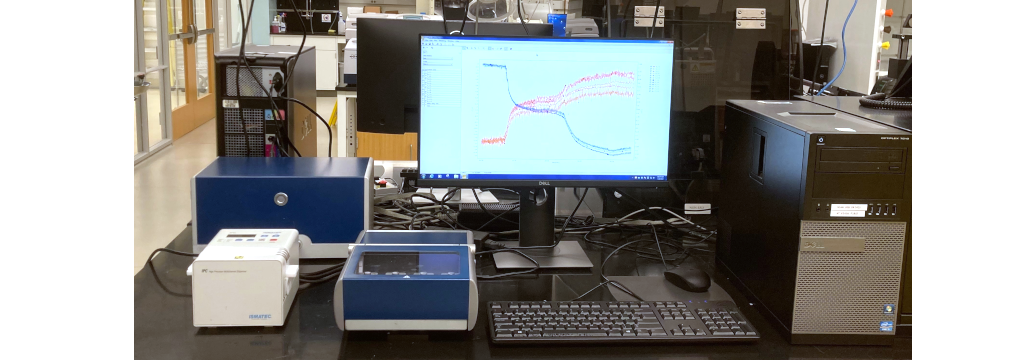Quartz Crystal Microbalance w/ Dissipation monitoring (QCM-D) - Qsense E4
Overview
Contact: Dmitry Koktysh
ESB 107 - Analytical
615-343-6757
Fee Structure
Get Access - Vanderbilt
Get Access - Non-Vanderbilt
The Q-Sense E4 includes four sensors that can be used in in any serial or parallel configuration to suit a variety of experimental designs. The software and electronics allow measurements from all four sensors to be acquired within one second without loss of sensitivity.
- 4-sensor chamber allows high throughput and makes reproducibility easy.
- Flow measurements. Chamber specifically designed for controlled flow measurements
- Easy cleaning. All parts exposed to liquid are easily removed for individual cleaning.
- Complete software package for presentation and analysis of data.
- Maximum sensitivity by using the latest electronics and software.
Capabilities
- Number of sensors: 4, also possible to measure using only 1,2 or 3 sensors
- Volume above each sensor: ~ 40 μl
- Minimum sample volume: ~300 μl
- Working temperature: 15 to 65 °C, controlled via the software, stability +-0.02 K
- Typical flow rates: 50-200 μl/min
- All parts exposed to liquid can easily be removed and cleaned in e.g. ultrasonic bath
- Sensor crystals: 5 MHz, 14 mm diameter, polished, AT-cut, gold electrodes
- Flow cell material: titanium
- Frequency range: 1-70 MHz (allows 7 frequencies, up to the 13th overtone, 65 Mhz for a 5 MHz crystal)
- Maximum mass sensitivity in liquid ~ 0.5 ng/cm2 (5 pg/mm2)
- Normal mass sensitivity in liquid ~ 1.8 ng/cm2 (18pg/mm2)
- Maximum dissipation sensitivity in liquid ~ 0.04 x 10-6
- Normal dissipation sensitivity in liquid ~ 0.1 x 10-6
- Modules: window, electrochemistry, high temperature module, ellipsometry

